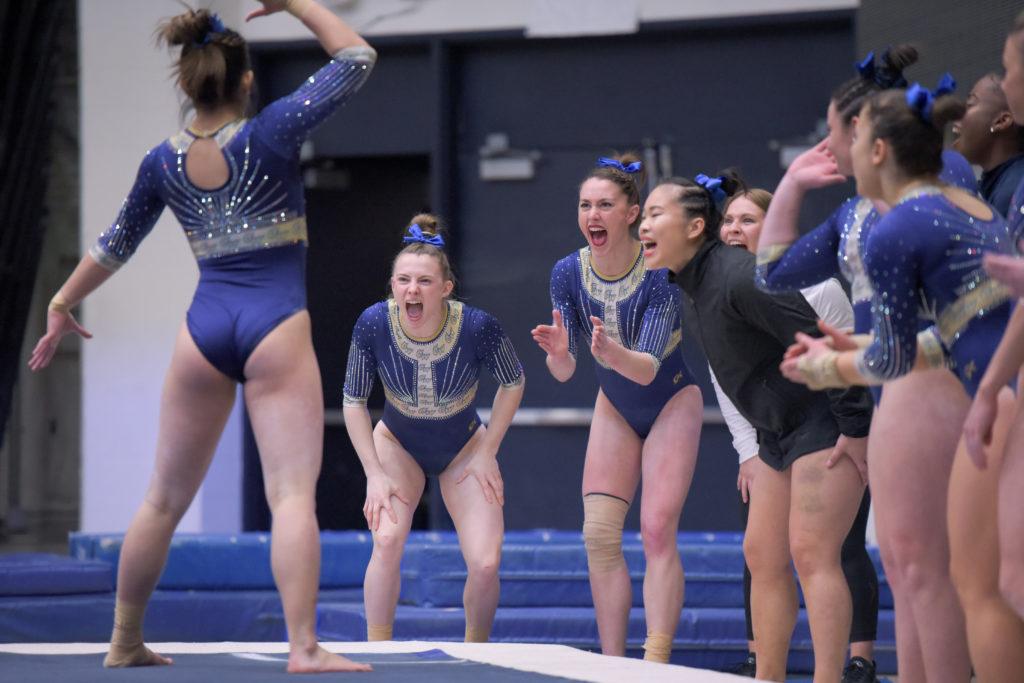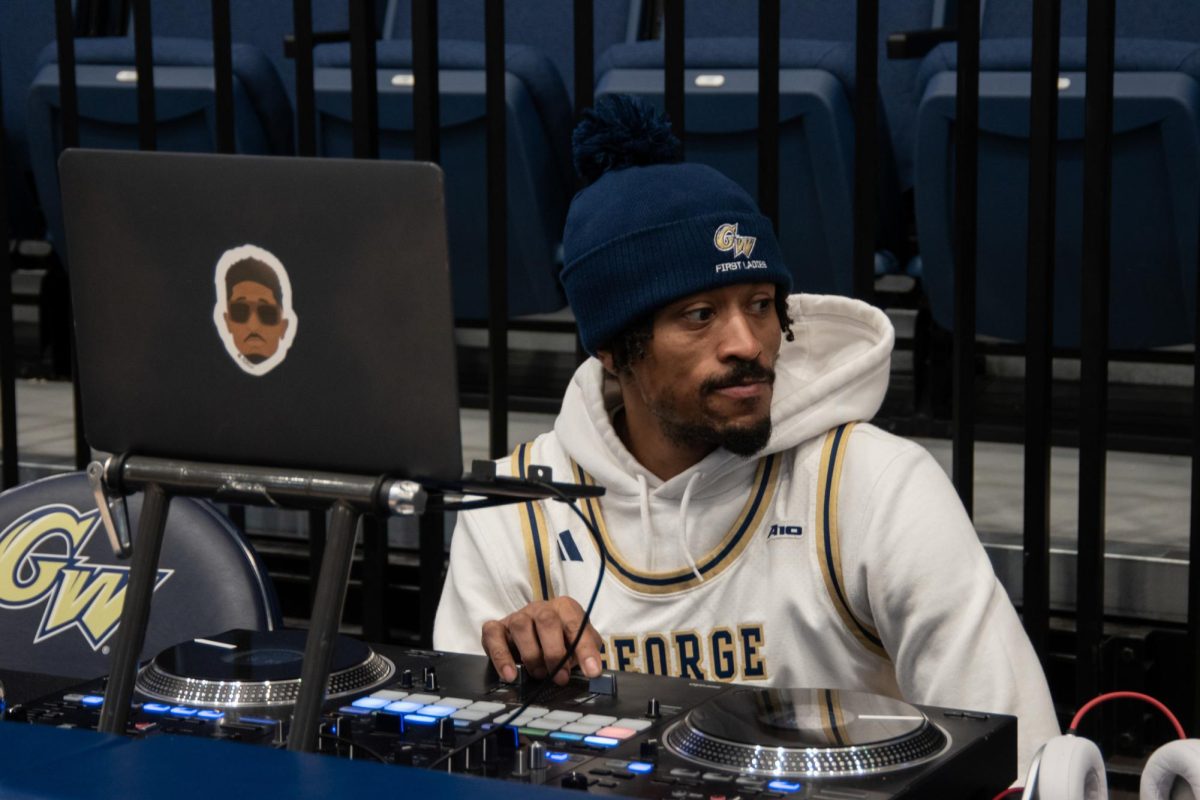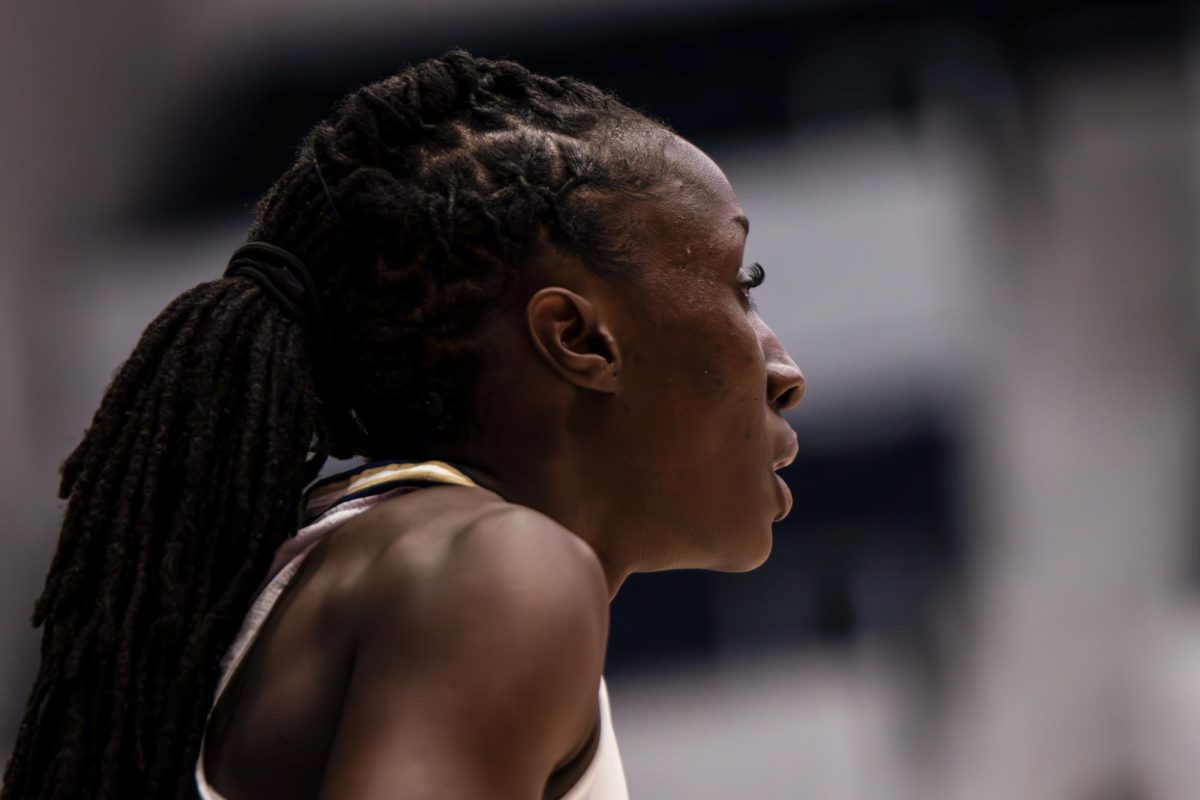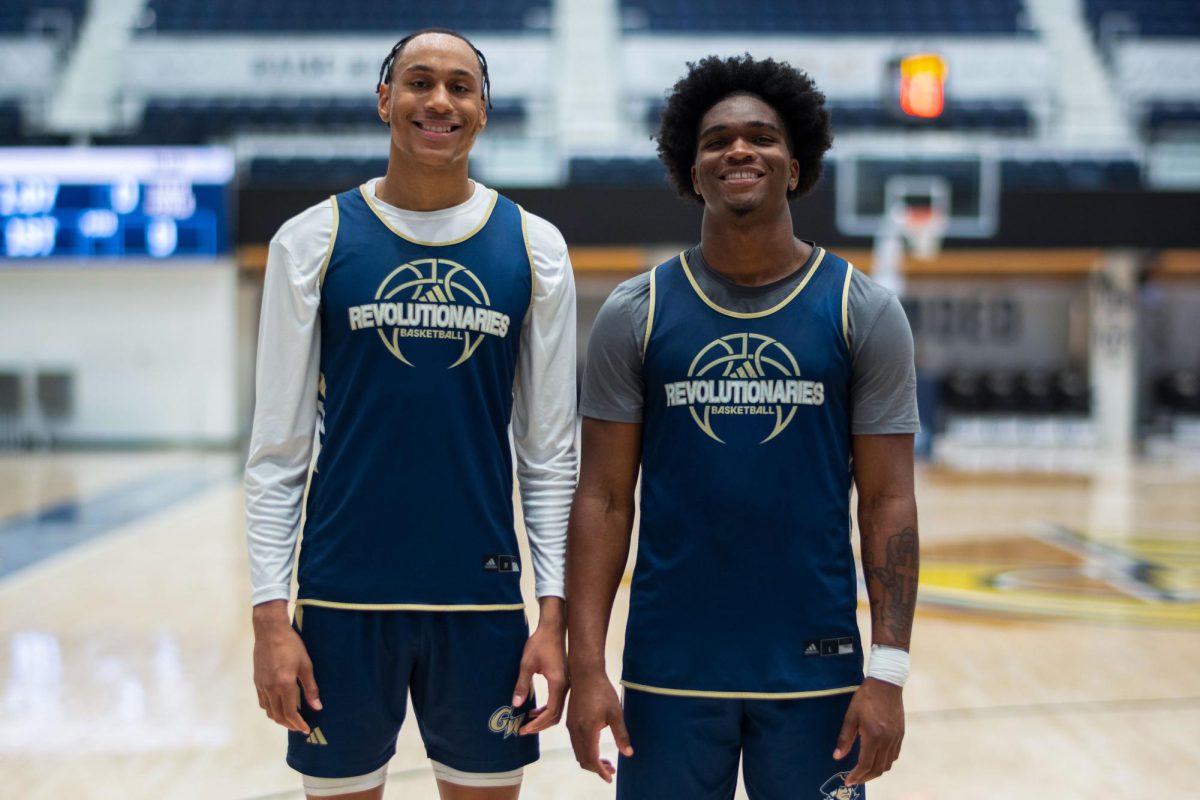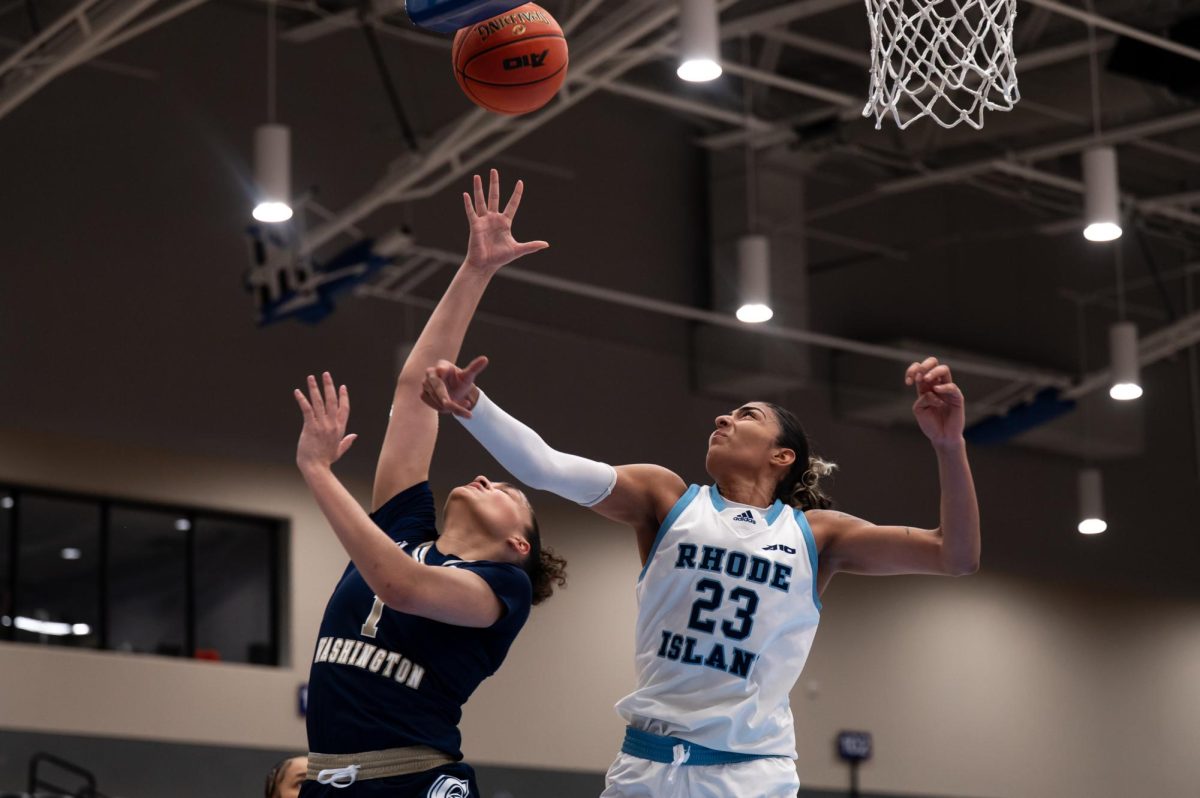With fall sports delayed until the spring semester, The Hatchet is checking in with head coaches from affected programs to gain insight on how each team is handling the pause on competition. Check back each week for new installments.
Women’s tennis and gymnastics are on opposite sides of the spectrum while preparing for a return to athletics.
Gymnastics head coach Margie Foster-Cunningham said she has a full 18-member roster in Foggy Bottom, and the team is adapting to campus safety protocols. Meanwhile, women’s tennis head coach Torrie Browning said her nine-member roster is spread across the world, making it difficult for athletes to keep the same practice regimen.
Here’s how the two squads are handling an unprecedented season:
Gymnastics
With a full squad back on campus, Foster-Cunningham has been able to continue practices.
While gymnastics is a winter sport, it typically practices throughout the fall semester to prepare for its competition season in January. She said the team has been back in the gym for more than a month and following a strict health and safety regimen.
In order to be cleared for practice, each student-athlete had to receive two negative COVID-19 tests in a three- to five-day period and quarantine for two weeks if they were coming from a high-risk state.
Some players coming from low-risk areas were able to start practicing weeks before their teammates, Foster-Cunningham said. She added that student-athletes from fully locked-down states, like New Jersey, were unable to access their home gyms and train throughout the off-season during the summer.
Foster-Cunningham said some athletes were more prepared than others this fall. She structured practices based on each student’s capabilities, she said.
“We’re a little bit behind on routines, but that will come,” Foster-Cunningham said. “Because it’s coming back to them, their bodies are catching up to their minds right now. They think they can do it, but their bodies are not quite there yet. We’re getting there.”
She said players live in two District Hall affinities, allowing them to create completely separate “pods” and curtail any risk of a team-wide infection. The affinities are complete with ping pong tables and corn hole, which Foster-Cunningham said have helped the team relax and have fun.
Practices are structured to maintain as much distance as possible, which is easier to achieve in a no-contact sport like gymnastics, she said.
She said before every practice, players get their temperature taken, complete a survey on their symptoms and prove that their COVID-19 test is negative. Once inside the gym, they take off their outside shoes and put them in plastic bags, and masks can be removed once practice starts, Foster-Cunningham added.
Despite having her entire team in D.C., Foster-Cunningham said she prefers virtual meetings over in-person gatherings where masks are still required because the team likes to see each other’s faces. She said the lacking social interaction is the hardest part of this season.
“We’re big huggers, we’re big high-five people,” Foster-Cunningham said. “We haven’t been able to touch each other, and I think in athletics, you really realize that’s missing right now.”
Women’s tennis
For the women’s tennis program, this fall is a true virtual season – no player returned to campus.
Browning said three of the squad’s four international players are currently in their home countries of New Zealand, Germany and Macedonia. Five other players are living and training together in Florida for the semester, she added.
Women’s tennis has its main competition season in the spring, but the program usually participates in a few fall tournaments from early September to October.
The fall slate gives the team valuable time to not just work on skills but to gel before spring competition, Browning said. She said not missing that time together puts the team at a “disadvantage.”
“I know they’re practicing and playing, but I can’t see exactly what they’re doing so we don’t know exactly where they would be when they come back in the spring,” she said.
Browning said she and her coaching staff hold weekly team and individual meetings, where they check in with players about classes, training progress and current events both inside and outside of GW. The team has struggled to manage varying time zones, but Browning said the meetings are important for team cohesion and training.
She added that coaches are splitting the team into rotating “accountability groups” of three players that check in with each other about their semester and training.
Browning said coaching her team remotely has been a challenge, but the distance is teaching her players to be independent.
“If you’re there in person, you’re seeing every little thing,” Browning said. “But now, it’s all based off of their experiences. There’s no one there to coach them. They have to coach themselves. It’s a really interesting dynamic, but it still works.”


